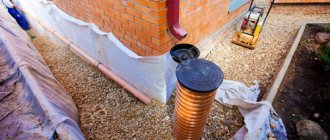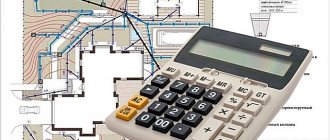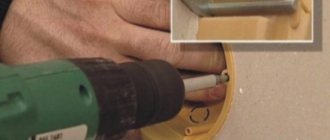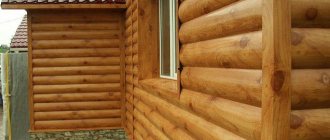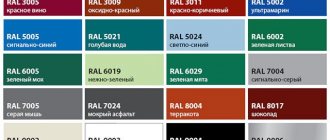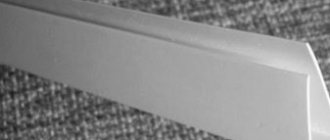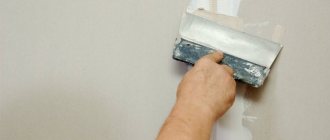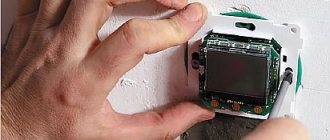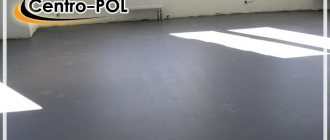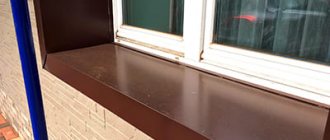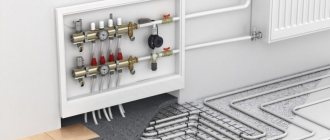The blind area is designed to protect the base of the building from destructive environmental factors.
These include precipitation and seasonal changes in air temperature. Heavy rains can destroy any foundation of a house, no matter what building material it is made of.
Organizing a drainage system, installing storm water inlets and storm sewers is a necessity for private sector buildings in central Russia and the southern regions. In the north, such structures will protect the building during spring floods.
We will talk about the construction of a blind area with a storm drain in the article.
How to choose a rainwater inlet for storm drainage
When choosing the right type of rainwater inlet for storm drainage, you need to take into account various factors, which, with the right approach, will provide you with long service life and reliability.
The most important of these factors are:
- intensity and amount of precipitation on the site, climatic conditions;
- storm drainage area;
- terrain;
With the correct calculation of these features of your site, you will be able to select the desired type of rainwater inlet itself.
For the backyard of a small private house, you can choose a rainwell that is lighter in weight and design, but if the climatic conditions are rainy and there is a lot of precipitation at different times of the year, then it is better to choose a cast iron option.
It will be able to withstand heavy loads and hold a lot of debris and leaves so that they do not clog underground sewer pipes.
Design features of rainwater inlets for storm drainage
All types of rainwater inlets differ in that they have different weights and depths. A standard rainwater inlet has a depth of about 40 centimeters and is light in weight, but if the material for its manufacture is cast iron, then the weight is much greater.
The rain inlet itself can be sold either separately or in a set with other elements for it.
The complete set consists of:
- the storm water inlet itself;
- baskets for rainwater inlets of different sizes;
- partitions - siphon;
- external grille.
All these elements may vary in quality and price. They are selected depending on the choice of the storm water inlet itself.
You can see the standard kit in the picture below.
The grid for point catchment can also be made of materials of different quality; its choice depends on the load that will be subsequently placed on the grid.
Materials for rainwater inlets: which is better, cast iron or plastic?
Previously, storm water inlets were made only of concrete or cast iron, but now another modification has been added to them - plastic storm water inlets for storm drainage.
At first glance, it may seem that it is better to choose cast iron material, as it is stronger.
But modern technologies make it possible to make the design of a plastic rainwater inlet highly durable and reliable.
The advantages of plastic materials are that they are light in weight and easy to install, protected from corrosion and external mechanical and chemical influences.
If you are still afraid that it will not withstand the load, then in the kit you can take a grate made of cast iron or other metal, this will reliably strengthen and protect the rain inlet.
You can see an example of a plastic point water collector in the image below.
The size of a standard plastic water collector for a home will be 300x300x300. You can also use this type of water collector as an independent collector well, since plastic rainwater inlets have the ability to install several layers, stacking them on top of each other to the desired height.
Cast iron rainwater inlets are most often used either on roads where vehicles frequently travel, or in places where water constantly accumulates.
We can also say that a cast iron drain can withstand a weight of about 90 tons, it is suitable for places with constant traffic and heavy traffic, and can withstand huge amounts of wastewater.
You can see what a cast iron drain looks like below.
Such a storm inlet can be quite large in size, this is suitable for the highest loads and will ensure the reliability of the storm sewer.
Briefly about the main thing
If the blind area around the house is not connected to the storm sewer, then protecting the foundation will not be fully effective. In addition, the drainage and collection of water in a separate storage tank will allow it to be used for household needs. It will also protect the front gardens around the building from erosion.
An important element of the storm drainage system is the rain inlet built into the blind area. It will keep the concrete path intact, filter rain streams from debris and provide a beautiful appearance to the blind area. Concrete, cast iron or durable plastic are used to make it.
For private construction, it is preferable to install water inlets made of frost-resistant polypropylene. The material has proven itself only on the positive side, since it is characterized by high strength, low weight and resistance to various aggressions, including chemical ones. In addition, the plastic structure is easy to install and convenient to maintain.
Ratings 0
Cast iron storm water inlets
The types and parameters of rectangular rainwater inlets made of cast iron are regulated by GOST 3634-99, which divides all products into the following categories:
- D – small storm water inlets weighing no more than 30 kg. and a rated load of up to 15 kilonewtons (kN), which in kilograms is equal to 1500 kg.
- DB1, DB2 - large storm water inlets with a total weight of about 50 kg. and 80 kg. Accordingly, they are installed on city highways and vehicle parking lots, holding a load of up to 12,500 kg.
- DM1, DM2 - mainline type models with a rated load of up to 25,000 kg, have a mass of 60 and 100 kg. Accordingly, they are used on highways with heavy traffic.
- DS1, DS2 - super-heavy modifications, designed to hold a nominal weight of 40,000 kg, product weight of 80 and 130 kg. Accordingly, they are used in areas of high loads (airfields, ship docks).
In addition to the rectangular products specified in the standard, the industry produces round varieties marked DK weighing about 100 kg, withstanding a rated load of about 15,000 kg.
Rice. 7 Cast iron drainage systems - examples of location
Cast iron structures have the following features:
- High drainage capacity due to the presence of wide cross-section grooves, ensuring the drainage of significant volumes of water.
- Durability to withstand significant loads of heavy vehicles.
- Long period of technical operation, which does not require frequent and complex maintenance of the drainage unit.
- High resistance to aqueous environments when the cast iron surface is coated with special corrosion-resistant components
- Environmental cleanliness and safety for people.
- Cost acceptable to the consumer.
- The large mass of the product makes its installation difficult, requiring the installation of a high-strength reinforced concrete well.
- Gratings and frames made from cheap, untreated cast iron are highly susceptible to corrosion.
- Due to widespread cases of theft of ferrous and non-ferrous metals, many devices are equipped with special fasteners consisting of elements that lock the grille.
In individual areas, such structures are rarely used due to their large dimensions and weight; for private areas, DB1 products with overall dimensions of 695x470x120 mm are most suitable.
Rice. 8 Plastic rainwater inlets for storm sewers - modifications
Features of installation of surface drainage systems
Often, on an individual plot near a private house, it is necessary to collect water from paving slabs, if the slope does not allow it to be drained outside the plot, and direct it to a drainage well or outside the plot. For these purposes, surface systems are used, consisting of rainwater inlets and trays made by hand from concrete, or factory products made of plastic, concrete or polymer concrete.
It is easier and faster to assemble surface drainage from semicircular trays made of concrete or plastic; work is carried out in the following order:
- They draw up a drainage diagram linked to the site plan, indicating the slopes and direction of water movement along the trays.
- Prepare the necessary tools, the main ones of which are a building level, an angle grinder, a rubber hammer, a spatula, and a bayonet shovel.
- A drainage hole is made in the concrete polymer sand catcher and a place is prepared for installing trays, observing the required slopes. To do this, mark a line with a cord along which you dig a ditch of the required depth so that there is a free space of about 10 cm on the bottom and sides of the tray.
- The trays are laid out along dug channels, starting from the highest point of the drain and connecting to each other; if necessary, use a grinder for adjustment.
- Place a concrete pad at the bottom of the pit and lower the trays onto it, checking the slope with a level and the straightness of the direction with a previously stretched cord. The position is adjusted using a rubber hammer.
- The joints in concrete-polymer trays are sealed using the sealant included in the kit; in the last section, a plug is glued to the end.
- After the concrete has hardened, the system is covered with gratings, then the channels are lined with paving slabs; during installation, the depth of the grating should be maintained at 3 - 5 mm. below the surface level of the paving lining.
Rice. 14 Isoline map of precipitation intensity depending on the area
If you liked the article, please share it
Previously on the topic:
Share
Installation of rainwater inlets installation features
If you choose a square design of a rain inlet made of plastic through which water will be drained, then the process of installing it under the drainpipes of the house will consist of the following steps:
- At the location of the rainwater inlet, a pit is dug to a depth of 30-40 cm greater than its height with a gap of 3 - 5 cm between the side walls and the surface of the pit.
- Prepare the body for installation of pipes by first cutting out holes of the required diameter using a jigsaw according to a template; the standard cross-section of sewer pipes is 110 mm. It should be borne in mind that for outdoor work orange pipes are always used, which are designed for lower temperatures than gray indoor domestic pipelines.
- The bottom of the pit is filled with a layer of sand and compacted in such a way that 5–10 cm remains to the bottom surface of a properly installed rainwater inlet. After compaction, the hole is filled with a small layer of concrete 5–10 cm thick, fixing the rainwater inlet in working position so that its bottom rested on the poured concrete layer. The element can be installed at the bottom of the pit even after the concrete pad has hardened; the main thing when solving this problem is to avoid the body subsiding into the ground over time.
- After installing the box, a pipeline located in pre-dug trenches with a slope of at least 2 cm per 1 linear meter is connected to it.
- After completing the installation of the last element, the system is checked for functionality with a stream of water from a watering hose and then buried; usually the next stage of work is the installation of a blind area and laying paving slabs.
Rice. 13 Installation of a rainwater inlet for storm drainage from polymer concrete trays
Drainage for groundwater removal
If the groundwater level is high, this can negatively affect the foundation. In this case, there is a need for deep drainage. Its elements are perforated pipes arranged according to a certain pattern, buried at the depth of soil water that requires drainage into the stormwater receiving collector. The specifics of deep drainage make it advisable to combine it with the foundation of the building. But when they learn about the problem with groundwater later, then with a skillful and balanced approach, resolving the issue will also not cause difficulties.
Attention! The connection of deep and surface systems is excluded. Deep drainage is designed to collect and remove moisture from the soil
The function of surface drainage is to prevent the accumulation of water in the local area.
Technology
- Before installing a deep drainage system, the area is carefully inspected. The natural slope is determined. A decision is made regarding the location of the pipes. Based on the data obtained, the necessary calculations are made and a diagram is drawn up.
- At the second stage, you will have to resort to manual drilling. The holes are made near the foundation. It is best to carry out work in the spring. At this time of year the groundwater level is highest.
- When a detailed plan has been drawn up, the territory is marked using pegs and twine.
- A trench is dug approximately 30 centimeters below the groundwater level. Where pipe connections or sharp bends are provided, it is necessary to make pits designed to accommodate inspection wells.
- Filling a leveling layer of sand (10-15 centimeters) and compacting it.
- Laying geotextiles in such a way that the side surfaces of the trench are covered.
- Backfilling and leveling of crushed stone. The thickness of the layer is from 7 to 10 centimeters.
- Laying perforated drainage pipes. The holes should face down.
- Installation and connection to pipes of inspection wells, the upper part of which is located above ground level. It is also necessary to take care of the possibility of removing debris from the pipes.
- Add crushed stone so that it is 10-15 centimeters higher than the pipe.
- Covering the crushed stone with geotextile fabric (the reserve remaining on the walls of the trench). Secure it with ropes.
- Backfilling the trench.
Types of rainwater inlets for storm drainage
All types of meltwater and sediment disposal systems are divided according to the materials used to manufacture their main element - a storm inlet, which is a round or rectangular body with outlets for gutters or pipe connections. The area of application of waste systems, their cost and installation methods depend on the material used to make the grille and body.
All rainwater gratings, depending on the load they can withstand, are marked with the following letter symbols:
- A – hold a weight of about 1500 kg, suitable for installing drainage systems in individual areas.
- B – the maximum load the device can withstand is no more than 12,500 kg, the grille carries the weight of vehicles and can be placed outside and inside garages.
- C – element supports weight up to 25,000 kg, installed on highways with heavy traffic.
- F – the product holds a weight of up to 90,000 kg, and is located along the route of heavy special equipment, at airports and ship repair docks.
Rice. 5 Features of the design of rainwater inlets for storm drainage systems made of concrete
Settlement costs
The price of the equipment consists of the parts involved in the system. Average price for items:
- Standard plastic trays - about 600 rubles per meter. The price depends on the strength, complexity of the design and the material from which they are made.
- Pipes - from 520 rubles per linear meter. The price also depends on the material and diameter.
- Plastic rain inlet with grate - from 325 rub. The more complex and durable the design, the more expensive it is.
Cost of installation of storm sewer:
| Type of work | Moscow and Moscow region, mp, r. | St. Petersburg and Leningrad Region, mp, r. | Krasnodar, mp, r. | Kazan, MP, r. | Rostov-on-Don, MP, r. |
| Above ground storm drain | From 1500 | 1500 | 1400 | 1500 | 1300 |
| Underground storm drain | From 2250 | 2300 | 2200 | 2300 | 2000 |
The cost of installation depends on the depth of the trench, the volume of work and complexity. The development of the project and the creation of the collector are paid separately.
The most important and useful information on the construction of blind areas is collected in this section.
Concrete structures
Traditional concrete catch basins are widely used in road construction; they can withstand high loads and are made from reinforced concrete or fiber-reinforced concrete. There are several types of products of this type, depending on the scope of application - light, heavy or long-haul.
Light types are a small model (no more than 400x400 mm), cubic in shape with a wall thickness of about 20 mm; for a greater depth of the outlet pipeline, they can be installed in a vertical position on top of each other. The products have low cost, long service life, and are resistant to temperature fluctuations over a wide range.
Heavy rainwater inlets for water drainage can withstand a weight of up to 3000 kg, and are installed in places with low load on the road surface - on pedestrian sidewalks, exits from buildings, in the subway and pedestrian crossings.
The body is made of fiber-reinforced concrete; the gratings are cast from black or zinc-coated cast iron.
Another type of heavy rainwater inlets is made from reinforced concrete; the structure is placed along the edges of the road surface of highways and is capable of withstanding long-term vehicle loads of up to 90 tons.
Another common option for stormwater inlets is main ones, which are assembled from ready-made concrete gutters or by casting them on site, which are then covered with cast-iron gratings. The design is widely used in road and individual construction to collect large flows of water from urban and private areas.
Rice. 6 Cast iron structures - appearance
Varieties
Stormwater wells vary in the material used. Devices available for sale include:
- cast iron;
- plastic;
- polymer concrete.
To make the right choice about where and which one is best to install, let’s consider their technical characteristics, as well as their pros and cons.
Made of cast iron
An important feature is its heavy weight. At the same time, it is capable of handling loads of up to 90 tons
Thanks to these technical characteristics, cast iron products are used in places where heavy loads are expected:
- Roadway.
- Car gas stations.
- Car parking.
- Highways.
- Pedestrian areas.
They cope well with sudden changes in air temperature and have a large throughput capacity, so there will definitely be no stagnation of water. In their shape, such products are square, round and rectangular. Depending on the shape, the corresponding protective grille is selected.
These designs have been less popular in recent years, as they have been replaced by new technologies that are much easier to install.
Made of plastic
Plastic baskets are the most popular. And this is not strange, because the material is lightweight, which simplifies its transportation, installation and maintenance. Modern modifications make it possible to cope with temperature changes from -40 to +90 degrees Celsius. Mainly used in arranging private houses and cottages. The material is based on polymer concrete, polyethylene and polypropylene.
By standard they have a cubic shape. There are pipes on each side, which allows you to connect several storm sewer pipes at once. The diameter of the pipe can vary from 110 to 200 mm. When choosing them, you may encounter special product markings:
- A – provides a load of 1.5 tons. Area of use: pedestrian paths.
- B – 12.5 t. For garages and parking structures.
- C – up to 25 tons. Used on highways and gas stations.
- D – up to 40 tons. Used in places where freight transport is operated.
- E – up to 60 tons. Truck parking.
- F – up to 90 tons. Used where massive special equipment is moving.
Made from polymer concrete
One of the varieties of plastic water intakes is polymer concrete. The product has the positive technical characteristics of plastic and concrete. It is used to organize storm drainage in parks, on pedestrian paths, parking lots, roadways, courtyards, private homes, etc. They are used in organizing linear and point design systems.
Location rules
When installing rainwater inlets, the following rules must be observed:
- Surface drainage systems are installed in places where water accumulates on the site; when placing the drainage pipeline, a slope of at least 20 mm is maintained. for products with a standard diameter of 110 mm, the indicator increases with small diameters and heavily contaminated wastewater.
- Surface drainage is located 3–5 mm below the coating level, and point storm drainage is installed in the same way.
- The house's storm pipe should be placed in the center of the drainage grate and at such a height as to ensure unobstructed removal of the cover and lifting of the sand trap basket.
Rice. 12 Installation of a rainwater inlet for storm drainage under drainpipes
Stormwater volume calculator
Usually, the determination of the volume of storm drains is carried out when designing storm sewers in public utilities; in individual housing construction, calculations are not relevant if water is drained outside the site. It is clear that the standard diameter of outlet pipes is 110 mm. in a set with industrially produced storm water inlets, will ensure the transportation of any water volumes that may appear on the site after a rainstorm or spring flood.
Calculating the amount of storm drains is important if they are discharged into a storage tank, the volume of which must be determined to avoid overflowing. The easiest way to make calculations is to use an online calculator; in this case, the amount of water collected from the entire site is calculated using the following formula:
Q = q x F x Y, where
Q is the total volume of storm water on an individual site;
q – coefficient characterizing the intensity of precipitation in a given area. Determined from tabular data from metrological or design organizations, as well as from special maps and diagrams for a given area, measured in liters per second per unit area (hectare).
F is the surface area of the area from which water is collected; it can be the roofs of houses and outbuildings or a landscaped area around a private house. For the convenience of calculations on calculators, this parameter is entered in square meters.
Y is a tabular coefficient characterizing the absorbing properties of the surface from which drainage is carried out. The standard calculator for calculations, instead of this Y indicator, includes a list of various surfaces: roofing, asphalt, paving slabs, turf.
After entering the data, the desired value is obtained in liters per second, minute, or cubic meters per hour.
Rice. 15 Drainage maintenance - examples
Plastic storm water inlets
Modern plastic storm water inlets have no competitors when used in households; they are made from frost-resistant polymers (special heat-resistant polypropylene) and have the following features:
- The plastic storm water inlet is lightweight and easy to install and assemble even by an unprepared homeowner. The device can be easily connected to a pipeline of any diameter thanks to the built-in cylindrical partitions.
- Standard modifications of an equilateral cubic storm inlet have edge lengths of 300, 400 and 500 mm.
- The manufacturing material is resistant to temperature changes in the range from -40 to +90 C., withstands the corrosive effects of most aggressive chemicals, and has a long service life.
- The device is easy to maintain and provides high-quality cleaning, thanks to the smooth, hard plastic surface with low hydraulic resistance and low absorbency.
- The design is made in such a way that it allows you to install rainwater inlets on top of each other, and to install pipes of any standard section at different levels.
- Depending on the expected load, gratings made of cast iron, galvanized steel, stainless steel, and plastic are installed in plastic boxes.
Rice. 9 Plastic drainage systems - design and correct installation diagram
A proper plastic storm inlet, unlike other types, has a more complex design, the main elements of which are:
- Lattice. Depending on the chosen model, it has a round or square shape; wastewater flows through its slots into the drainage system.
- Garbage bin. Prevents heavy debris and sand particles that collect on its bottom surface from entering the pipeline channel.
- Protective siphon. The rubber element prevents the spread of contaminated air from the baskets.
- Water seal. The partition is placed at the entrance to the pipeline and stops the movement of wastewater in the opposite direction.
- Protective cover. The element closes the rainwater inlet in winter, preventing it from clogging with snow and ice from frozen water.
- Extension. Allows you to increase the height of the structure and, accordingly, the depth of its immersion into the ground together with the pipeline system; it is used as a means of protecting pipes from freezing in winter.
- Luke. Installed instead of a grille if the device is used as an inspection or maintenance hatch.
Rice. 10 Stormwater drainage system from trays - layout diagram
What does it consist of?
If you compare storm drains, you will notice that they differ in weight, size and some other features. According to the standard, the depth of the device is 400 mm. As a rule, they are light in weight, except when cast iron is used as the material.
- The container itself.
- A basket that is installed inside the water intake.
- Partition or siphon.
- External grille.
In different types, these elements can be made of different materials, which affects the final quality of the product. As for the grille, it is necessary to choose a high-quality and durable one, since it encounters mechanical stress when pedestrians walk and even when hit by a car.
Installation of rainwater inlets for storm drainage
As a rule, storm water inlets are installed both under sewer pipes and in places of puddles or accumulation of rain and melt water.
During installation, an important point is to take into account the depth at which the rainwater inlet will be located, as well as its size.
If you carry out all the installation stages correctly, you can be sure that the storm drain will last a long time and will not be clogged with debris.
Location rules
If the rainwater inlet is positioned incorrectly, most of the water will remain on the surface and the rainwater drainage system will be useless.
To remove as much wastewater as possible, you need to install drains in low-lying areas of the area or make a depression for them so that the water itself flows to the storm drain.
This rule also applies to those gutters that are installed under the sewer pipe.
You also need to choose a place for the drainage under the pipe so that the streams of water fall clearly into the center of the rainwater inlet.
You can see an example of the correct installation of a drainage system under a drain pipe in the photo below.
Storm water inlet under the drain pipe
After choosing a location for the rain inlet, you can begin its installation.
Features of installation of rainwater inlets
First of all, when installing storm drains, you should remember that the drain needs to be provided with a solid foundation and well fixed underground.
Let's consider the main steps when installing a rainwater inlet:
- first you need to dig a pit, measuring the depth of the storm drain itself and adding 30-40 cm to it, and also leaving 3 cm on the sides for pouring concrete;
- a sand cushion is poured onto the bottom of the pit, which is filled with water and compacted tightly;
- The rainwater inlet must be connected to the sewer pipes leading to the collector and the entire structure must be leveled in height;
- pour a thin layer of concrete mortar onto the bottom and lay the rainwater inlet tightly;
- now the concrete needs to be carefully poured onto the sides of the drain;
- After this, you can install the partitions and storm drain basket.
After installation, the surface gap around the drain can be filled with sand or gravel.
You can view the general installation diagram of the rainwater inlet below.
Storm water inlet installation diagram
Next, the storm sewer itself is connected and the rainwater inlet is ready for use.
Once every 2-3 months, its basket must be cleared of debris; if you do this regularly, then your storm sewer will serve you for a very long time.
Preparing the soil for the blind area
Soil preparation
Thesis No. 1: geotextiles serve for waterproofing, protect the foundation from frost heaving of clay, and serve as a separating layer between sand and crushed stone. Thesis No. 2: expanded polystyrene is a material with high frost resistance and water resistance.
Before you begin preparing the soil, you need to determine the width of the blind area. If you do not have a pediment, that is, an overhanging part of the roof, then you can be satisfied with a size of 60 cm. If there is a pediment, you need to add another 20 cm to the size. Soil preparation should begin by removing the fertile layer of soil, that is, everything that grows from above in the form of grass, flowers, mosses is removed to solid ground.
Even if this layer is up to 1 meter deep, it still needs to be removed. After you have reached completely dense soil, be it clay or black soil, we lay geotextiles at the bottom of the trench and cover it with a 5-10 cm layer of crushed stone, level it and compact it, and also cover it with geotextiles. On this layer of geotextile we pour a ball of sand without foreign impurities and without clay, which we also compact using a vibrating rammer or a manual tamper. We water this sandy layer with water and compact it again and do this as many times as necessary so that the sandy layer is as hard as possible. Usually two or three times is enough.
What is storm drainage and its components
The storm drain has a fairly simple design - the water entering through its grate is filtered and flows down inclined pipes into the sewer well.
The main components of the stormwater sewer system are the following components:
- Lattice. Water enters the system through the element and serves to ensure safe passage and passage, screening out large objects and debris that clog the channel. Made from galvanized or stainless steel, cast iron, high-strength plastic.
- Sand trap. The main purpose of the sand filter is to collect sand and other heavy small debris that leads to clogging of the underground pipeline channel. Structurally, it is made in the form of a basket with a handle, onto the bottom of which heavy sand settles, and water enters the channel through a hole located above; according to the principle of operation, it resembles a siphon under a kitchen sink. The element is placed under the cover and does not carry a large load, so it is most often made of plastic; during operation it must be regularly cleaned of sand. In other similar models, garbage settles in a rectangular tray without a handle, which is also easily accessible after removing the top cover.
- Storm water inlet. The basis of the entire structure, the grate rests on it and a filter is installed inside, accumulates the collected water and directs it through the outlet holes into the pipeline channel. The element is made in the form of a square or cylindrical container; the materials used are high-strength polymers, cast iron, and concrete.
- Pipes. Water is drained from the storm drain body using smooth PVC sewer pipes that are resistant to low temperatures. Pipes made of asbestos cement, cast iron, and ceramics are used less frequently. The cross-section of the pipelines corresponds to the outlet openings in the rainwater inlet body. In popular inexpensive plastic models, the outlet usually has a size of 110 mm, but in the construction of, for example, parking lots, wells with a pipe outlet of 160, 200 mm can be used.
- Inspection manifolds. As in any sewer line, inspection taps are needed to monitor the performance and clear the pipeline of blockages.
Rice. 2 Storm water inlet device for storm drainage
What does it consist of?
If you compare storm drains, you will notice that they differ in weight, size and some other features. According to the standard, the depth of the device is 400 mm. As a rule, they are light in weight, except when cast iron is used as the material.
Please note! Reservoirs can be sold as a complete set or individual elements.
Consists of the following parts:
- The container itself.
- A basket that is installed inside the water intake.
- Partition or siphon.
- External grille.
In different types, these elements can be made of different materials, which affects the final quality of the product. As for the grille, it is necessary to choose a high-quality and durable one, since it encounters mechanical stress when pedestrians walk and even when hit by a car.
Purpose, classification and design
Water intakes used for drainage, when placed in the area of an individual residential building, perform the following functions:
- They protect the walls and foundation of the house from getting wet by water flowing from the roof.
- They protect basements and basements in cases where spring flooding may occur.
- They allow you to save water by collecting it in drainage wells for further use for household purposes.
- They protect landscape elements and the vegetable garden (paths, flower beds, beds) in the garden area from erosion by water, and help prevent puddles from forming on the site.
- When the runoff falls from the pipes, it destroys the material of the blind area; this can be avoided by protecting it from destruction while simultaneously draining the water by installing storm water inlets.
Rice. 3 Storm water inlets for the drainage system - installation diagram
The storm drainage system works as follows:
Through a high-strength decorative grille, which fulfills the main condition necessary for aesthetics - an attractive appearance, water enters the pre-cleaning element in the form of a basket for settling sand. Heavy dirt and sand remain at the bottom of the rainwater basket, and the liquid enters the channels and gutters through the holes located above in the housing that houses the filter device. The further path of the water lies through an underground pipeline laid with a slight slope; it enters a storage well, where it is collected for further use or disposal.
The main differences between all systems are the design of the rainwater inlet, which has the following body designs:
- Rectangular. The rectangular design can be found on the streets of any city - such heavy cast-iron gratings of a standard size are located along city highways. Such a drainage system often has a large length and is assembled into a main line of several buildings, installed along certain sections of highways, streets, and pedestrian crossings. It is used in cases where the collected water flow has a large distribution area; sometimes devices are installed under sewer pipes to collect water from several points into one channel.
- Square. These devices are used when the area from which wastewater needs to be drained is small; they are usually located directly under the drainpipes of houses. Square models are widely used in individual households; due to the low loads on the lattice, their bodies are produced in a polymer version.
- With frame. Similar types are used in areas of high loads on surface lattice elements; they are mainly located on roads. When installed, their grid rests on a strong metal frame, which prevents deformation and destruction of the well, and its immersion under the road surface.
Rice. 4 Designs of storm water inlets with different grid shapes
Structure care
Like the sewer system, storm drainage needs maintenance, and the following cleaning methods are used:
- The sand trap baskets located under the drainpipes of the house should be regularly cleaned of sand as they fill; the same operation is carried out with surface drainage baskets at a higher frequency (once every 2 - 3 months.)
- To clean the rain inlet, basket and trays, you also need to rinse with a stream of water under high pressure, using a hose connected to the water supply system, while all contaminants are washed off and discharged outside through the channel.
- To clean the drain from mold, plaque, algae, which are sources of microbes and unpleasant odors, you can use construction or gardening tools (trowels, scrapers) in combination with household chemicals for cleaning water pipes.
Typically, the design of a house and the surrounding area includes a storm drainage layout, which serves to drain rainwater from the roofs of houses and outbuildings, as well as from the sidewalk outside the site. In everyday life, when choosing the right rainwater inlet, they often give preference to a drain from a wide range of plastic models - the devices have a low cost, good physical parameters, an aesthetic appearance, and are easy to install and assemble with your own hands.
Calculation as an integral part of the work performed
Without carrying out the necessary calculations, you can forget about the positive result of the task being performed. In the event that the storm drain does not cope with its intended function, then there is no need for its installation. In addition, when creating a larger storm drainage system with your own hands, there is a risk of investing a larger amount of money. In this regard, there is a need to recalculate all possible costs. To ensure accurate calculations, finding out the following information will help:
- Physical and chemical properties of soil.
- Drainage area.
- Data on the average amount of recorded precipitation in your region and region. To obtain this information, you can contact SNIP.
- Information about accessible communications located underground.
- When planning the drainage of melt water, it is necessary to take into account the frequency of precipitation and the thickness of the snow cover.
How to choose a rain inlet for storm drainage of a private house
In everyday life, storm drains made of concrete or cast iron are used quite rarely due to the complexity of installation and heavy weight; their use is ineffective due to the lack of high loads. Cast iron gratings of class D1, D2 are sometimes located in places where cars pass, at the entrance to the garage or on the access roads to the house.
The vast majority of houses are installed under drainpipes with plastic structures that are distinguished by their functionality, high technical characteristics and ease of installation. In addition, the price of such devices is quite affordable and affordable for any homeowner.
A small plastic model installed under the drainpipes of a house has an aesthetic appearance and modern design, and does an excellent job of filtering and draining stormwater into the pipeline and then into the storage well. In addition, the device is easy to maintain - periodic cleaning of the sand collection basket is done quite rarely and takes a minimum of time.
To cope with surface runoff throughout the entire site, drainage lines are used in everyday life, which are prefabricated trays or semicircular guides cast from concrete, located at the same level with the ground cover and covered with gratings. Such a system allows water to be drained from laid paving slabs or other covering over a large area, transporting it along underground concrete or plastic guides outside the site or into drainage tanks.
Rice. 11 Tool for installing storm drains
Water intake wells
Water collected by storm sewers is discharged into storage wells.
It can be cleaned and used for irrigation or technical needs, pumped out, discharged into the nearest ravine, pond, etc. The capacity of the drainage well is determined by the catchment area, the amount of precipitation, and the intensity of snow melting. It should be such that the mine does not overflow even during periods of peak loads.
Design:
- the main part is a shaft made of large-diameter corrugated plastic pipe, concrete rings, with brick walls, etc. Installed vertically at the lowest point of the linear drainage system;
- the bottom should not allow water to pass through; for prefabricated structures, during its installation, waterproofing of joints and connections is carried out;
- branch pipes are installed at the entry points of sewer pipes, and they are waterproofed. They are placed in such a way as to avoid the reverse flow of water into the linear drainage system when filling the water intake tank;
- the cover is removable, covers the above-ground part of the shaft, and is used to access the inside of it, control the condition of the well, and pump out water.
To prevent the water intake well from silting up, sand traps and siphons are used when installing storm sewers, and it is possible to install filtration equipment. Siltation can occur due to cracks, gaps in the walls, at the joints of concrete rings, and pipe entries. During installation, these areas are isolated and treated with sealant. Installation is carried out on a base filled with crushed stone and sand or using concreting. A foundation pit is first prepared for the mine. After the walls are leveled vertically, the pit is backfilled with constant compaction to maintain the verticality of the shaft.
